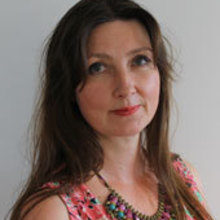Editorial
Issue: Real superheroes
25 February 2014 article

Welcome to the February issue of Microbiology Today. This issue, the first of 2014, was a real pleasure to bring together. It highlights the incredible diversity of microbes that were first imagined and visually represented in 1854 after Dr John Snow established that cholera was a water-borne disease. I have no doubt that in the 19th century, as astonishing and disturbing as this new microscopic world appeared to be, the realms of habitats, adaptations and evolutionary advantage could not have been imagined.
In many ways, even with modern scientific technologies and expertise, the microbial world that continues to be discovered defies imagination. The incredible diversity and ability of microbes to colonise and thrive in every habitat and niche that has been identified by humans, is utterly remarkable and is one of the key reasons that I chose to study microbiology many years ago. As technology has advanced and we no longer rely on our ability to culture and use microscopy, the microbial world continues to both expand and amaze.
In this edition we have chosen to highlight several microbes that exhibit qualities that in a human would be regarded as fantasy. Dr Elinor Thompson describes the fascinating superhero Dictyostelium discoideum. Dicty are one of the social amoebae, a group of fascinating eukaryotic microbes with superhero shape-shifting qualities that switch between a unicellular and a multicellular existence. The wonder of living with a rock-like shell is explored by Dr Thomas Mock and Amanda Hopes, who describe the world of diatoms. These exquisite unicellular algae with both plant and animal properties produce complex, beautiful, silica frustules or glass shells. It is estimated that they contribute 40–45% of oceanic primary productivity (20% of global carbon fixation and oxygen production) and are heavily involved in the ocean carbon cycle. Dr Terry McGenity describes the practically immortal, halophilic superhero Halobacterium salinarum. This haloarchaea is an extremophile that has been found in salt lakes, coastal salterns and ancient salt crystals. It provides the striking red hues visualised from space and associated with these extremely salty environments, such as the Great Salt Lake in Utah. Talking of outer space, Dr Om V. Singh’s article provides an overview of these ‘super’ radiation-resistant extremophiles that can be found in the outer reaches of Earth’s atmosphere and beyond. His article discusses the potential use of these microbes in biotechnology and medicine. Finally, Dr Chris Smith discusses a super power that is only in the realm of superheroes, invisibility. It is clear that any of the four definitions of ‘invisible’ found in the Collins dictionary – cannot be seen; out of sight; imperceptible; and kept hidden - can be applied to viral latency.
The Schoolzone section offers an alternative to the superhero theme. We are provided with details about some of the supervillains that are found in the microbial world: bacteria that feed on bacteria from the outside in!
Comment is provided by a member of the successful Dundee iGEM team, which was supported by the Microbiology Society. The International Genetically Engineered Machine (iGEM) competition is a synthetic biology competition run by the not-for-profit iGEM Foundation where undergraduate and postgraduate teams of students from across the globe compete for the chance to go to Boston, USA, for the World Finals. The team were crowned Regional Winners at the European iGEM jamboree, held in Lyon, France, and had great success in Boston. Chris Earl provides a student’s perspective and offers a personal insight into the benefits of taking part in this global competition.
Welcome to 2014, we hope it treats you well. 2014 represents the 100-year anniversary of the start of the ‘war to end all wars’, 100 years since World War 1, and this will be the focus of the May issue.
Finally, I would like to offer our congratulations to our Society’s President, Professor Nigel Brown, on being awarded an OBE for services to Science in the Queen’s New Years Honours list: very well deserved and an inspiration to us all!
LAURA BOWATER
Editor
[email protected]
